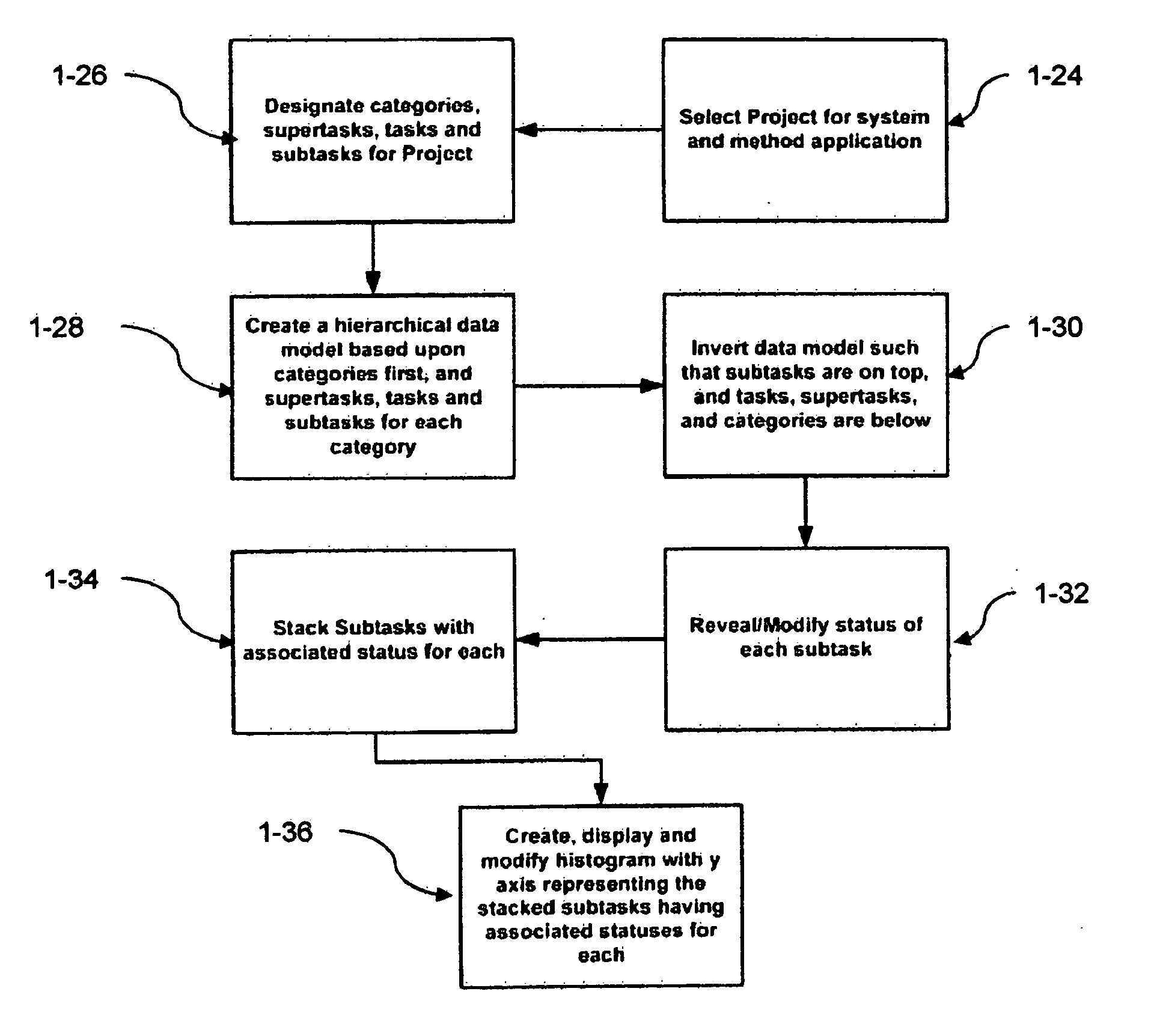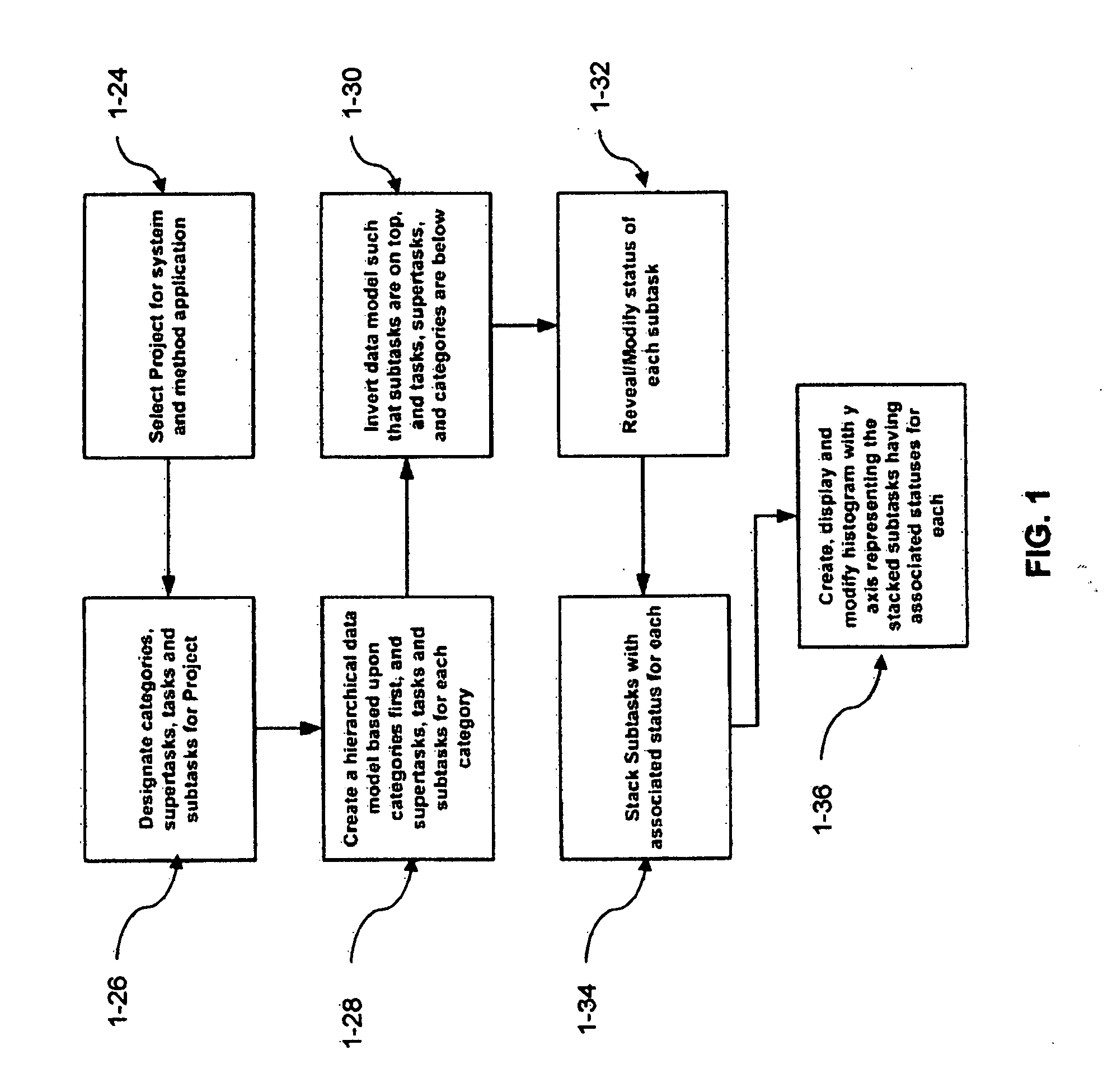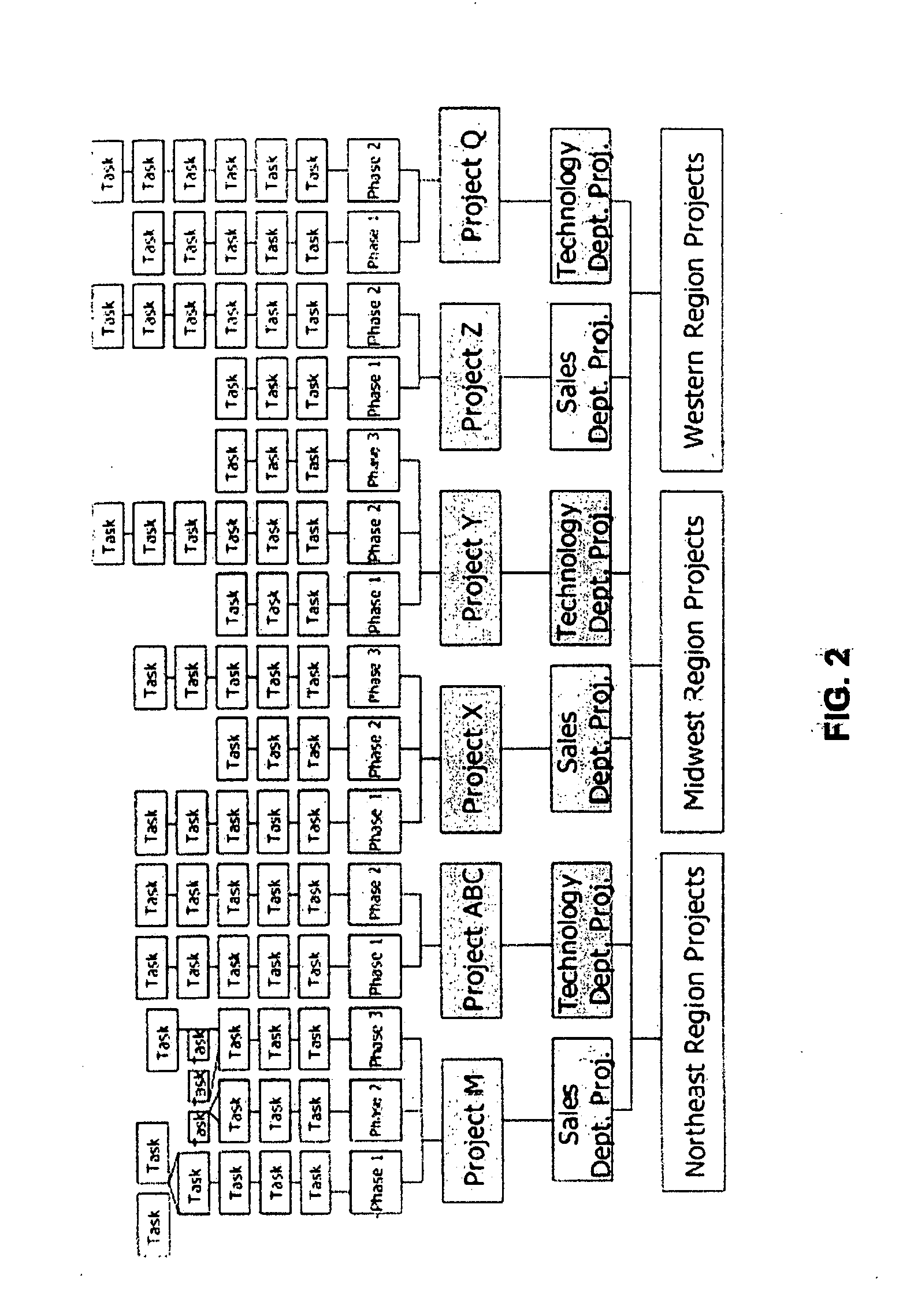System and method for visually organizing, prioritizing and updating information
- Summary
- Abstract
- Description
- Claims
- Application Information
AI Technical Summary
Benefits of technology
Problems solved by technology
Method used
Image
Examples
second embodiment
[0141]FIG. 11 is a display on a computer monitor in graph configuration form of a second embodiment provided when carrying out the method of the present invention by a computer program which executes a method of the present invention.
[0142] In this graph configuration, the program expresses two categories, namely category 1 and category 2 which are aligned in a horizontal row.
[0143] Stacked below category 1 is subcategory 1 whose width is identical to the width of category 1.
[0144] Stacked below subcategory 1 of category 1 is a plurality of data cells namely a, b, c and d, which are aligned and stacked below subcategory 1 of category 1 and whose width is identical to the width of category 1.
[0145] Stacked below the plurality of data cells in subcategory 1 of category 1 namely a, b, c and d, is another subcategory, namely subcategory 2 of category 1 which also has stacked below it data cells namely e and f, which are aligned and stacked below subcategory 2 of category 1 and whose ...
third embodiment
[0152]FIG. 12 is a display on a computer monitor in graph configuration form of a third embodiment provided when carrying out the method of the present invention by a computer program which executes a method of the present invention.
[0153] In this graph configuration, the program expresses two categories, namely category 1 and category 2 which are aligned in a horizontal row.
[0154] Stacked below category 1 is subcategory 1 whose width one half of the width of category 1.
[0155] Stacked below subcategory 1 of category 1 is a plurality of data cells namely “a”, “b”, and “c”, which are aligned and stacked below subcategory 1 of category 1 and whose width is identical to the width of category 1. However the program specifies a maximum stacking height. Consequently data cell “d” has been automatically snaked over to a position on the same horizontal level as subcategory 1 of category 1 whose width is identical to the width of subcategory 1 of category 1.
[0156] Stacked below data cell “...
fourth embodiment
[0161]FIG. 13 is a display on a computer monitor in graph configuration form of a fourth embodiment provided when carrying out the method of the present invention by a computer program which executes a method of the present invention.
[0162] In this graph configuration, the program expresses two categories, namely category 1 and category 2 which are aligned in a horizontal row.
[0163] Stacked below category 1 is subcategory 1 whose width the same width as category 1.
[0164] Stacked below subcategory 1 of category 1 is a plurality of data cells namely a and b which are aligned and stacked below subcategory 1 of category 1 and whose width is one half of the width of subcategory 1. However the program specifies a maximum stacking height. Consequently data cells c and d have been automatically snaked over to a position on the same horizontal level as data cells “a” and “b”, respectively.
[0165] Stacked below data cells “b” and “d” is a new subcategory, namely subcategory 2 of category 1 ...
PUM
 Login to View More
Login to View More Abstract
Description
Claims
Application Information
 Login to View More
Login to View More - R&D
- Intellectual Property
- Life Sciences
- Materials
- Tech Scout
- Unparalleled Data Quality
- Higher Quality Content
- 60% Fewer Hallucinations
Browse by: Latest US Patents, China's latest patents, Technical Efficacy Thesaurus, Application Domain, Technology Topic, Popular Technical Reports.
© 2025 PatSnap. All rights reserved.Legal|Privacy policy|Modern Slavery Act Transparency Statement|Sitemap|About US| Contact US: help@patsnap.com



